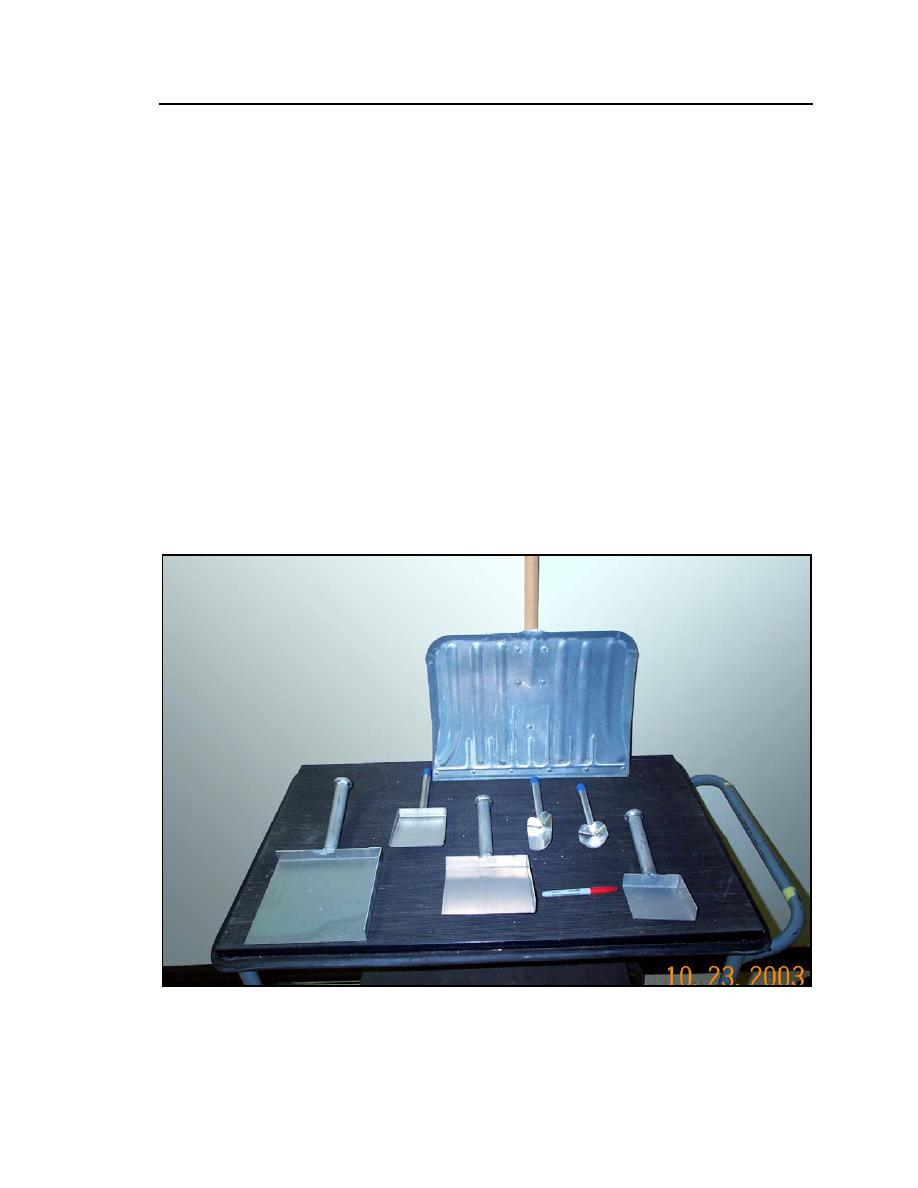
Field Sampling Tools
7
We have found that the most effective strategy for sampling discrete
detonations from both live-fire and rounds statically detonated (blown-in-place,
or BIP) is to use an ice-covered area that is covered with a thin layer of snow.
This area must not have been fired into since ice formation. With sufficient ice
cover, rounds will not penetrate and samples obtained will contain only detona-
tion residues and frozen water. The ice and snow cover thus provides a pristine
environment within an impact area, ideal for sampling.
Current practice is divided into two strategies: Obtaining several (1530)
large-area (m2) discrete samples or a few (13) multi-increment composite
samples for each event. The tools differ for the application. For large-area
discrete samples, a PTFE-coated aluminum snow shovel is used (Fig. 4). This
shovel has the upper corners bent in to facilitate loading the sample bags. There
is no depth control to achieve the 2- to 3-cm depth required for a standard
sample. The sampling area is demarcated by outlining the area with the shovel
blade, which is 46 cm in length. Remnant residue in the 1-m2 sampled area is
cleaned up using one of the small stainless steel scoops shown in front of the
shovel.
Figure 4. Snow sampling tools.



 Previous Page
Previous Page
